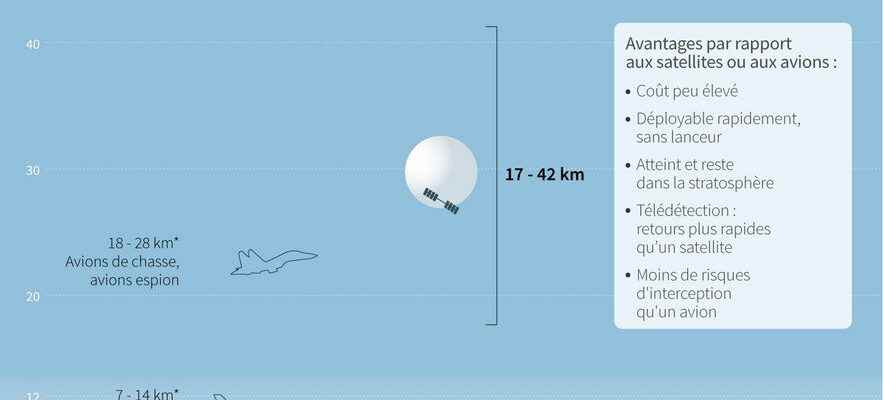In the quarrel which opposes Americans and Chinese on the passage of a spy balloon over the territory of the United States, it is undoubtedly necessary to return to a little more… lightness. Above all, it testifies to a diplomatic standoff between the two greatest world powers more than to a real threat. On the facts and for several days the Pentagon has been monitoring a balloon that is difficult to identify but easily visible from the ground using a telescope. According to many experts who have looked at the pictures, it is a simple balloon with solar panels and not an airship. A priori the difference is size, the first drift according to the winds. “A dirigible has the ability, thanks to thrusters, to fight against air currents and therefore to remain stationary above a specific point”, explains one of them. It is therefore more capable of carrying out an observation mission.
However in his declarations Pat Ryder, the commander of the aerospace defense of the United States and Canada (NORAD) affirms that the machine, “as big as three buses” is of a “diameter of 30 to 40 meters” is “clearly intended for surveillance and that its trajectory takes it over sensitive sites” (in this case the nuclear silos of the State of Montana). If so, what kind of surveillance would a drifting balloon allow?
The solar panels seen on the Chinese aerostat suggest that it is a machine built for long journeys and that it needs solar energy to recharge its batteries and operate a host of instruments. Some specialists imagine “wide-angle” cameras to cover a large area with good image resolution; others believe that it can play a role in electronic warfare, in particular by using its own radars to collect the radar signature of certain sensitive telecommunications sites. Finally, the spy balloon may have been dropped like its counterparts used in the meteorological field to collect more conventional information in the upper atmosphere – temperature, wind speed, pressure, humidity. This information would be used to calibrate the trajectory of any long-range missiles.
High altitude balloons
© / afp.com/Nalini LEPETIT-CHELLA
Towards maneuvering stratospheric balloons
The imagery capacity could also be developed on atmospheric balloons on condition that they are made manoeuvrable. In Europe, the National Center for Space Studies (CNES), which has the greatest expertise in this type of device, is seeking to develop one, particularly for military use. The idea is to create a “bi-balloon” ie a double envelope: a first classically inflated with helium providing lift and a second with air to ensure better maneuverability. The Americans have been working on this concept for more than two years: the company Raven Aerostar, which recovered the giant Google balloons, baptized at the time by Loon and which were to provide Internet coverage in the most isolated places (project abandoned in 2021), carried out several tests with bi-balloons: the air injected using a pump allows the assembly to lose weight and therefore to act on its trajectory as much as, by changing the air current, improve its flight time.
“We see a real market emerging for persistent balloons which can then monitor a border, a maritime area or… strategic targets. And if there are several of them, they will have the ability to sweep a larger territory while being more discreet and less predictable than large satellites whose position the military knows.” By tracking and then revealing the existence of the Chinese spy balloon, the Americans are therefore aware of the threat it can represent.
On the other hand, the decision not to shoot down a craft that flies over American airspace without having asked permission also means that the Pentagon does not consider this threat too serious. This will not prevent the Department of Defense from trying to recover it when it lands to examine it closely. But this incident has already had a major diplomatic consequence: Secretary of State Antony Blinken canceled his visit to China scheduled for this weekend while Beijing said it “regrets” this incident, ensuring that the aircraft has only a meteorological sight.
